Fr. Brown’s October 2018 Reading List
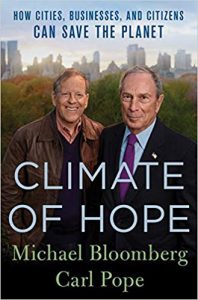
Climate of Hope
From Mayor Michael Bloomberg and former head of the Sierra Club Carl Pope comes a manifesto on how the benefits of taking action on climate change are concrete, immediate, and immense. They explore climate change solutions that will make the world healthier and more prosperous, aiming to begin a new type of conversation on the issue that will spur bolder action by cities, businesses, and citizens―and even, someday, by Washington.
“Climate of Hope is an inspiring must read.” ―Former Vice President Al Gore, Chairman of The Climate Reality Project
“Climate change threatens to reshape the future of our world’s population centers. Bloomberg and Pope have been leaders on fortifying our cities against this threat, and their book proves that victory is possible―and imperative.” ―Leonardo DiCaprio
“If Trump is looking for a blueprint, he could not do better than to read a smart new book, Climate of Hope.” ―Thomas Friedman in The New York Times
The 2016 election left many people who are concerned about the environment fearful that progress on climate change would come screeching to a halt. But not Michael Bloomberg and Carl Pope.
Bloomberg, an entrepreneur and former mayor of New York City, and Pope, a lifelong environmental leader, approach climate change from different perspectives, yet they arrive at similar conclusions. Without agreeing on every point, they share a belief that cities, businesses, and citizens can lead―and win―the battle against climate change, no matter which way the political winds in Washington may shift.
In Climate of Hope, Bloomberg and Pope offer an optimistic look at the challenge of climate change, the solutions they believe hold the greatest promise, and the practical steps that are necessary to achieve them. Writing from their own experiences, and sharing their own stories from government, business, and advocacy, Bloomberg and Pope provide a road map for tackling the most complicated challenge the world has ever faced. Along the way, they turn the usual way of thinking about climate change on its head: from top down to bottom up, from partisan to pragmatic, from costs to benefits, from tomorrow to today, and from fear to hope.
The Sun Does Shine
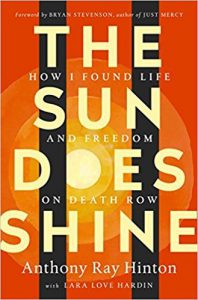 In 1985, Anthony Ray Hinton was arrested and charged with two counts of capital murder
in Alabama. Stunned, confused, and only twenty-nine years old, Hinton knew that it
was a case of mistaken identity and believed that the truth would prove his innocence
and ultimately set him free.
In 1985, Anthony Ray Hinton was arrested and charged with two counts of capital murder
in Alabama. Stunned, confused, and only twenty-nine years old, Hinton knew that it
was a case of mistaken identity and believed that the truth would prove his innocence
and ultimately set him free.
But with no money and a different system of justice for a poor black man in the South, Hinton was sentenced to death by electrocution. He spent his first three years on Death Row at Holman State Prison in agonizing silence―full of despair and anger toward all those who had sent an innocent man to his death. But as Hinton realized and accepted his fate, he resolved not only to survive, but find a way to live on Death Row. For the next twenty-seven years he was a beacon―transforming not only his own spirit, but those of his fellow inmates, fifty-four of whom were executed mere feet from his cell. With the help of civil rights attorney and bestselling author of Just Mercy, Bryan Stevenson, Hinton won his release in 2015.
With a foreword by Stevenson, The Sun Does Shine is an extraordinary testament to the power of hope sustained through the darkest times. Destined to be a classic memoir of wrongful imprisonment and freedom won, Hinton’s memoir tells his dramatic thirty-year journey and shows how you can take away a man’s freedom, but you can’t take away his imagination, humor, or joy.
Barking to the Choir
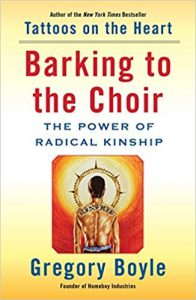 In his first book, Tattoos on the Heart: The Power of Boundless Compassion, Gregory Boyle introduced us to Homeboy Industries, the largest gang-intervention
program in the world. Critics hailed that book as an “astounding literary and spiritual
feat” (Publishers Weekly) that is “destined to become a classic of both urban reportage and contemporary spirituality”
(Los Angeles Times). Now, after the successful expansion of Homeboy Industries, Boyle returns with
Barking to the Choir to reveal how compassion is transforming the lives of gang members.
In his first book, Tattoos on the Heart: The Power of Boundless Compassion, Gregory Boyle introduced us to Homeboy Industries, the largest gang-intervention
program in the world. Critics hailed that book as an “astounding literary and spiritual
feat” (Publishers Weekly) that is “destined to become a classic of both urban reportage and contemporary spirituality”
(Los Angeles Times). Now, after the successful expansion of Homeboy Industries, Boyle returns with
Barking to the Choir to reveal how compassion is transforming the lives of gang members.
In a nation deeply divided and plagued by poverty and violence, Barking to the Choir offers a snapshot into the challenges and joys of life on the margins. Sergio, arrested at nine, in a gang by twelve, and serving time shortly thereafter, now works with the substance-abuse team at Homeboy to help others find sobriety. Jamal, abandoned by his family when he tried to attend school at age seven, gradually finds forgiveness for his schizophrenic mother. New father Cuco, who never knew his own dad, thinks of a daily adventure on which to take his four-year-old son. These former gang members uplift the soul and reveal how bright life can be when filled with unconditional love and kindness.
This book is guaranteed to shake up our ideas about God and about people with a glimpse at a world defined by more compassion and fewer barriers. Gently and humorously, Barking to the Choir invites us to find kinship with one another and reconvinces us all of our own goodness.
Chokehold
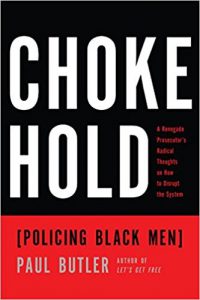 Cops, politicians, and ordinary people are afraid of black men. The result is the
Chokehold: laws and practices that treat every African American man like a thug. In
this explosive new book, an African American former federal prosecutor shows that
the system is working exactly the way it’s supposed to. Black men are always under
watch, and police violence is widespread—all with the support of judges and politicians.
Cops, politicians, and ordinary people are afraid of black men. The result is the
Chokehold: laws and practices that treat every African American man like a thug. In
this explosive new book, an African American former federal prosecutor shows that
the system is working exactly the way it’s supposed to. Black men are always under
watch, and police violence is widespread—all with the support of judges and politicians.
In his no-holds-barred style, Butler, whose scholarship has been featured on 60 Minutes, uses new data to demonstrate that white men commit the majority of violent crime in the United States. For example, a white woman is ten times more likely to be raped by a white male acquaintance than be the victim of a violent crime perpetrated by a black man. Butler also frankly discusses the problem of black on black violence and how to keep communities safer—without relying as much on police.
Chokehold powerfully demonstrates why current efforts to reform law enforcement will not create lasting change. Butler’s controversial recommendations about how to crash the system, and when it’s better for a black man to plead guilty—even if he’s innocent—are sure to be game-changers in the national debate about policing, criminal justice, and race relations.
$2.00 A Day
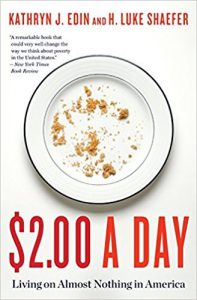 Jessica Compton’s family of four would have no income if she didn’t donate plasma
twice a week at her local donation center in Tennessee. Modonna Harris and her teenage
daughter, Brianna, in Chicago, often have no food but spoiled milk on weekends.
Jessica Compton’s family of four would have no income if she didn’t donate plasma
twice a week at her local donation center in Tennessee. Modonna Harris and her teenage
daughter, Brianna, in Chicago, often have no food but spoiled milk on weekends.
After two decades of brilliant research on American poverty, Kathryn Edin noticed something she hadn’t seen before — households surviving on virtually no cash income. Edin teamed with Luke Shaefer, an expert on calculating incomes of the poor, to discover that the number of American families living on $2.00 per person, per day, has skyrocketed to one and a half million households, including about three million children.
Where do these families live? How did they get so desperately poor? Through this book’s eye-opening analysis and many compelling profiles, moving and startling answers emerge. $2.00 a Day delivers new evidence and new ideas to our national debate on income inequality.
“Harrowing . . . [An] important and heart-rending book, in the tradition of Michael Harrington’s The Other America.” — Los Angeles Times
Drawdown
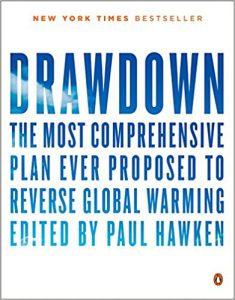 In the face of widespread fear and apathy, an international coalition of researchers,
professionals, and scientists have come together to offer a set of realistic and bold
solutions to climate change. One hundred techniques and practices are described here—some
are well known; some you may have never heard of. They range from clean energy to
educating girls in lower-income countries to land use practices that pull carbon out
of the air. The solutions exist, are economically viable, and communities throughout
the world are currently enacting them with skill and determination. If deployed collectively
on a global scale over the next thirty years, they represent a credible path forward,
not just to slow the earth’s warming but to reach drawdown, that point in time when
greenhouse gases in the atmosphere peak and begin to decline. These measures promise
cascading benefits to human health, security, prosperity, and well-being—giving us
every reason to see this planetary crisis as an opportunity to create a just and livable
world.
In the face of widespread fear and apathy, an international coalition of researchers,
professionals, and scientists have come together to offer a set of realistic and bold
solutions to climate change. One hundred techniques and practices are described here—some
are well known; some you may have never heard of. They range from clean energy to
educating girls in lower-income countries to land use practices that pull carbon out
of the air. The solutions exist, are economically viable, and communities throughout
the world are currently enacting them with skill and determination. If deployed collectively
on a global scale over the next thirty years, they represent a credible path forward,
not just to slow the earth’s warming but to reach drawdown, that point in time when
greenhouse gases in the atmosphere peak and begin to decline. These measures promise
cascading benefits to human health, security, prosperity, and well-being—giving us
every reason to see this planetary crisis as an opportunity to create a just and livable
world.
God is Young
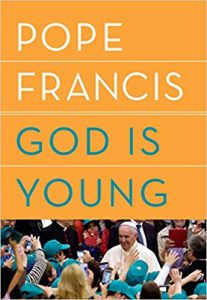 Since his election in 2013, Pope Francis has reinvigorated the Catholic Church and
become one of the most popular global leaders. Now, in this extraordinary interview
with journalist Thomas Leoncini, His Holiness reminds Catholics of all ages that “God
is young; He is always new.” God has energy, spontaneity, and the desire for change—youthful
qualities that can be rallied to fight the many problems facing the Catholic Church
and the world at large. In this inspiring volume, published in English for the first
time, Pope Francis’s solution to these challenges is simple: a “revolution of tenderness”
that unites believers of all ages in a mission to remake the world.
Since his election in 2013, Pope Francis has reinvigorated the Catholic Church and
become one of the most popular global leaders. Now, in this extraordinary interview
with journalist Thomas Leoncini, His Holiness reminds Catholics of all ages that “God
is young; He is always new.” God has energy, spontaneity, and the desire for change—youthful
qualities that can be rallied to fight the many problems facing the Catholic Church
and the world at large. In this inspiring volume, published in English for the first
time, Pope Francis’s solution to these challenges is simple: a “revolution of tenderness”
that unites believers of all ages in a mission to remake the world.
“God is young! God is the Eternal One who has no time, but is able to renew and rejuvenate Himself and all things continually. The most distinctive attributes of the young are also His. He is young because He makes all things new and loves innovation; because He astonishes and loves astonishment; because He dreams and wants us to dream.” —Pope Francis
Praise for God Is Young
“Enlightening . . . The interview is extremely wide-ranging. [Pope Francis’s] answers contemplate not only philosophy but such quotidian things as plastic surgery, pets, cell phones, consumerism, and more. The pope’s answers are generous in their length, some being even mini homilies. But all are thoughtful and thought-provoking, of interest and benefit to readers of all ages.” —Booklist (starred review)
Let’s Get Free
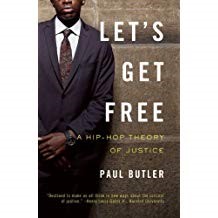 Paul Butler was an ambitious federal prosecutor, a Harvard Law grad who gave up his
corporate law salary to fight the good fight—until one day he was arrested on the
street and charged with a crime he didn’t commit. The Volokh Conspiracy calls Butler’s account of his trial “the most riveting first chapter I have ever
read.”
Paul Butler was an ambitious federal prosecutor, a Harvard Law grad who gave up his
corporate law salary to fight the good fight—until one day he was arrested on the
street and charged with a crime he didn’t commit. The Volokh Conspiracy calls Butler’s account of his trial “the most riveting first chapter I have ever
read.”
In a book Harvard Law professor Charles Ogletree calls “a must read,” Butler looks at places where ordinary citizens meet the justice system—as jurors, witnesses, and in encounters with the police—and explores what “doing the right thing” means in a corrupt system.
Since Let’s Get Free’s publication in spring 2009, Butler has become the go-to person for commentary on criminal justice and race relations: he appeared on ABC News, Good Morning America, and Fox News, published op-eds in the New York Times and other national papers, and is in demand to speak across the country. The paperback edition brings Butler’s groundbreaking and highly controversial arguments—jury nullification (voting “not guilty” in drug cases as a form of protest), just saying “no” when the police request your permission to search, and refusing to work inside the system as a snitch or a prosecutor—to a whole new audience.
Our Father: The Lord’s Prayer
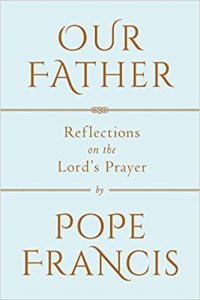 This new work by Pope Francis illuminates the most important prayer in all of Christianity,
verse by verse, in conversation with Father Marco Pozza, a theologian and a prison
chaplain in Padua, Italy. Here Francis offers unprecedented insight on Jesus’s most
profound words, while exploring the importance of social justice, benevolence, and
forgiveness, key elements of Bergoglio’s papacy.
This new work by Pope Francis illuminates the most important prayer in all of Christianity,
verse by verse, in conversation with Father Marco Pozza, a theologian and a prison
chaplain in Padua, Italy. Here Francis offers unprecedented insight on Jesus’s most
profound words, while exploring the importance of social justice, benevolence, and
forgiveness, key elements of Bergoglio’s papacy.
Our Father: The Lord’s Prayer looks to address the concerns and hopes of today’s men and women, seeking to become a guide to living a life that is full of meaning, purpose, and strength. “It takes courage to truly believe that God is the Father that accompanies us, forgives us, gives us bread, is attentive to everything we ask…what if it is not true?” the Pope writes. Challenging this doubt, he issues a call to “dare…help each other, one another to dare.”
Ripples of Hope
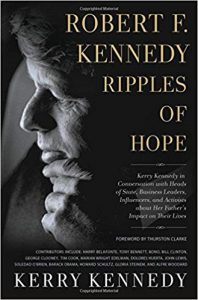 Kerry Kennedy, daughter of Robert F. Kennedy, shares personal remembrances of her
father and through conversations with politicians, media personalities, celebrities
and leaders, explores the influence that he continues to have on the issues at the
heart of America’s identity.
Kerry Kennedy, daughter of Robert F. Kennedy, shares personal remembrances of her
father and through conversations with politicians, media personalities, celebrities
and leaders, explores the influence that he continues to have on the issues at the
heart of America’s identity.
Robert F. Kennedy staunchly advocated for civil rights, education, justice, and peace; his message transcended race, class, and creed, resonating deeply within and across America. He was the leading candidate for the Democratic nomination for the presidency and was expected to run against Republican Richard Nixon in the 1968 presidential election, following in the footsteps of his late brother John. After winning the California presidential primary on June 5, 1968, Robert Kennedy was shot, and he died the following day. He was forty-two.
Fifty years later, Robert Kennedy’s passions and concerns and the issues he championed are-for better and worse-still so relevant. RIPPLES OF HOPE explores Kennedy’s influence on issues at the heart of America’s identity today, including moral courage, economic and social justice, the role of government, international relations, youth, violence, and support for minority groups, among other salient topics.
RIPPLES OF HOPE captures the legacy of former senator and U.S. attorney general Robert F. Kennedy through commentary from his daughter, as well as interviews with dozens of prominent national and international figures who have been inspired by him. They include Barack Obama, John Lewis, Marian Wright Edelman, Alfre Woodard, Harry Belafonte, Bono, George Clooney, Gloria Steinem, and more. They share personal accounts and stories of how Kennedy’s words, life, and values have influenced their lives, choices, and actions. Through these interviews, Kerry Kennedy aims to enlighten people anew about her father’s legacy and bring to life RFK’s values and passions, using as milestones the end of his last campaign and a life that was cut off much too soon.
Tears We Cannot Stop
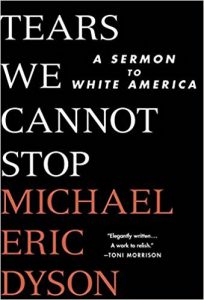 Short, emotional, literary, powerful―Tears We Cannot Stop is the book that all Americans who care about the current and long-burning crisis
in race relations will want to read.
Short, emotional, literary, powerful―Tears We Cannot Stop is the book that all Americans who care about the current and long-burning crisis
in race relations will want to read.
As the country grapples with racist division at a level not seen since the 1960s, one man’s voice soars above the rest with conviction and compassion. In his 2016 New York Times op-ed piece “Death in Black and White,” Michael Eric Dyson moved a nation. Now he continues to speak out in Tears We Cannot Stop―a provocative and deeply personal call for change. Dyson argues that if we are to make real racial progress we must face difficult truths, including being honest about how black grievance has been ignored, dismissed, or discounted.
“The time is at hand for reckoning with the past, recognizing the truth of the present, and moving together to redeem the nation for our future. If we don’t act now, if you don’t address race immediately, there very well may be no future.”
The Coddling of the American Mind
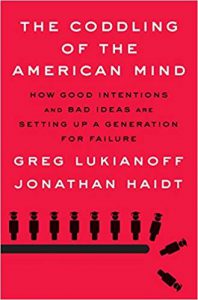 Something has been going wrong on many college campuses in the last few years. Speakers
are shouted down. Students and professors say they are walking on eggshells and are
afraid to speak honestly. Rates of anxiety, depression, and suicide are rising—on
campus as well as nationally. How did this happen?
Something has been going wrong on many college campuses in the last few years. Speakers
are shouted down. Students and professors say they are walking on eggshells and are
afraid to speak honestly. Rates of anxiety, depression, and suicide are rising—on
campus as well as nationally. How did this happen?
First Amendment expert Greg Lukianoff and social psychologist Jonathan Haidt show how the new problems on campus have their origins in three terrible ideas that have become increasingly woven into American childhood and education: What doesn’t kill you makes you weaker; always trust your feelings; and life is a battle between good people and evil people. These three Great Untruths contradict basic psychological principles about well-being and ancient wisdom from many cultures. Embracing these untruths—and the resulting culture of safetyism—interferes with young people’s social, emotional, and intellectual development. It makes it harder for them to become autonomous adults who are able to navigate the bumpy road of life.
Lukianoff and Haidt investigate the many social trends that have intersected to promote the spread of these untruths. They explore changes in childhood such as the rise of fearful parenting, the decline of unsupervised, child-directed play, and the new world of social media that has engulfed teenagers in the last decade. They examine changes on campus, including the corporatization of universities and the emergence of new ideas about identity and justice. They situate the conflicts on campus within the context of America’s rapidly rising political polarization and dysfunction.
This is a book for anyone who is confused by what is happening on college campuses today, or has children, or is concerned about the growing inability of Americans to live, work, and cooperate across party lines.
The Soul of America
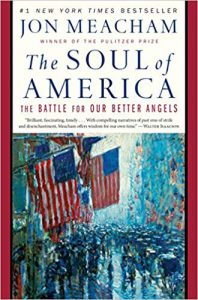 Our current climate of partisan fury is not new, and in The Soul of America Meacham shows us how what Abraham Lincoln called the “better angels of our nature”
have repeatedly won the day. Painting surprising portraits of Lincoln and other presidents,
including Ulysses S. Grant, Theodore Roosevelt, Woodrow Wilson, Franklin D. Roosevelt,
Harry S. Truman, Dwight Eisenhower, and Lyndon B. Johnson, and illuminating the courage
of such influential citizen activists as Martin Luther King, Jr., early suffragettes
Alice Paul and Carrie Chapman Catt, civil rights pioneers Rosa Parks and John Lewis,
First Lady Eleanor Roosevelt, and Army-McCarthy hearings lawyer Joseph N. Welch, Meacham
brings vividly to life turning points in American history. He writes about the Civil
War, Reconstruction, and the birth of the Lost Cause; the backlash against immigrants
in the First World War and the resurgence of the Ku Klux Klan in the 1920s; the fight
for women’s rights; the demagoguery of Huey Long and Father Coughlin and the isolationist
work of America First in the years before World War II; the anti-Communist witch-hunts
led by Senator Joseph McCarthy; and Lyndon Johnson’s crusade against Jim Crow. Each
of these dramatic hours in our national life have been shaped by the contest to lead
the country to look forward rather than back, to assert hope over fear—a struggle
that continues even now.
Our current climate of partisan fury is not new, and in The Soul of America Meacham shows us how what Abraham Lincoln called the “better angels of our nature”
have repeatedly won the day. Painting surprising portraits of Lincoln and other presidents,
including Ulysses S. Grant, Theodore Roosevelt, Woodrow Wilson, Franklin D. Roosevelt,
Harry S. Truman, Dwight Eisenhower, and Lyndon B. Johnson, and illuminating the courage
of such influential citizen activists as Martin Luther King, Jr., early suffragettes
Alice Paul and Carrie Chapman Catt, civil rights pioneers Rosa Parks and John Lewis,
First Lady Eleanor Roosevelt, and Army-McCarthy hearings lawyer Joseph N. Welch, Meacham
brings vividly to life turning points in American history. He writes about the Civil
War, Reconstruction, and the birth of the Lost Cause; the backlash against immigrants
in the First World War and the resurgence of the Ku Klux Klan in the 1920s; the fight
for women’s rights; the demagoguery of Huey Long and Father Coughlin and the isolationist
work of America First in the years before World War II; the anti-Communist witch-hunts
led by Senator Joseph McCarthy; and Lyndon Johnson’s crusade against Jim Crow. Each
of these dramatic hours in our national life have been shaped by the contest to lead
the country to look forward rather than back, to assert hope over fear—a struggle
that continues even now.
While the American story has not always—or even often—been heroic, we have been sustained by a belief in progress even in the gloomiest of times. In this inspiring book, Meacham reassures us, “The good news is that we have come through such darkness before”—as, time and again, Lincoln’s better angels have found a way to prevail.
The Teenage Brain
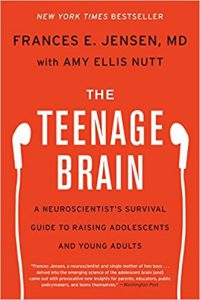 Dr. Frances E. Jensen is chair of the department of neurology in the Perelman School
of Medicine at the University of Pennsylvania. As a mother, teacher, researcher, clinician,
and frequent lecturer to parents and teens, she is in a unique position to explain
to readers the workings of the teen brain. In The Teenage Brain, Dr. Jensen brings to readers the astonishing findings that previously remained buried
in academic journals.
Dr. Frances E. Jensen is chair of the department of neurology in the Perelman School
of Medicine at the University of Pennsylvania. As a mother, teacher, researcher, clinician,
and frequent lecturer to parents and teens, she is in a unique position to explain
to readers the workings of the teen brain. In The Teenage Brain, Dr. Jensen brings to readers the astonishing findings that previously remained buried
in academic journals.
The root myth scientists believed for years was that the adolescent brain was essentially an adult one, only with fewer miles on it. Over the last decade, however, the scientific community has learned that the teen years encompass vitally important stages of brain development.
On Point
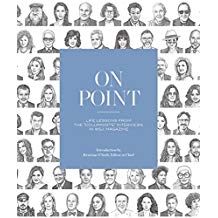 “Good advice,” says writer Cheryl Strayed, “is simply about sharing your perspective.”
This concise, but powerful insight is one of the countless invaluable lessons shared
in On Point. Here, hundreds of luminaries, across a diverse spectrum of professions and backgrounds,
offer their hard-won knowledge “On Success,” “On Fear,” “On Solitude,” “On Obsession,”
“On Risk,” and about dozens of other compelling and universal topics. Based on WSJ Magazine‘s “Columnist” page, which debuted in 2013, ON POINT collects the very best of these
interviews, from Dwayne Wade on Discipline and Simone Biles on Impulse to Yoko Ono on Patience and Sarah Jessica Parker on Transformation. The result is a beautifully designed, giftable book that informs, delights, and
inspires. Each of the 250+ entries in ON POINT is accompanied by an iconic stipple
drawing of the contributor.
“Good advice,” says writer Cheryl Strayed, “is simply about sharing your perspective.”
This concise, but powerful insight is one of the countless invaluable lessons shared
in On Point. Here, hundreds of luminaries, across a diverse spectrum of professions and backgrounds,
offer their hard-won knowledge “On Success,” “On Fear,” “On Solitude,” “On Obsession,”
“On Risk,” and about dozens of other compelling and universal topics. Based on WSJ Magazine‘s “Columnist” page, which debuted in 2013, ON POINT collects the very best of these
interviews, from Dwayne Wade on Discipline and Simone Biles on Impulse to Yoko Ono on Patience and Sarah Jessica Parker on Transformation. The result is a beautifully designed, giftable book that informs, delights, and
inspires. Each of the 250+ entries in ON POINT is accompanied by an iconic stipple
drawing of the contributor.
Leonardo Da Vinci
The author of the acclaimed bestsellers Steve Jobs, Einstein, and Benjamin Franklin brings Leonardo da Vinci to life in this exciting new biography.
Based on thousands of pages from Leonardo’s astonishing notebooks and new discoveries about his life and work, Walter Isaacson weaves a narrative that connects his art to his science. He shows how Leonardo’s genius was based on skills we can improve in ourselves, such as passionate curiosity, careful observation, and an imagination so playful that it flirted with fantasy.
He produced the two most famous paintings in history, The Last Supper and the Mona Lisa. But in his own mind, he was just as much a man of science and technology. With a passion that sometimes became obsessive, he pursued innovative studies of anatomy, fossils, birds, the heart, flying machines, botany, geology, and weaponry. His ability to stand at the crossroads of the humanities and the sciences, made iconic by his drawing of Vitruvian Man, made him history’s most creative genius.
His creativity, like that of other great innovators, came from having wide-ranging passions. He peeled flesh off the faces of cadavers, drew the muscles that move the lips, and then painted history’s most memorable smile. He explored the math of optics, showed how light rays strike the cornea, and produced illusions of changing perspectives in The Last Supper. Isaacson also describes how Leonardo’s lifelong enthusiasm for staging theatrical productions informed his paintings and inventions.
Leonardo’s delight at combining diverse passions remains the ultimate recipe for creativity. So, too, does his ease at being a bit of a misfit: illegitimate, gay, vegetarian, left-handed, easily distracted, and at times heretical. His life should remind us of the importance of instilling, both in ourselves and our children, not just received knowledge but a willingness to question it—to be imaginative and, like talented misfits and rebels in any era, to think different.
The System
NCAA football is big business. Every Saturday millions of people file into massive stadiums or tune in on television as “athlete-students” give everything they’ve got to make their team a success. Billions of dollars now flow into the game. But wThe Systemhat is the true cost? The players have no share in the oceans of money. And once the lights go down, the glitter doesn’t shine so brightly. Filled with mind-blowing details of major NCAA football scandals, with stops at Ohio State, Tennessee, Texas Tech, Missouri, BYU, LSU, Texas A&M and many more, The System explores and exposes the complex, and perhaps broken, machine that churns behind the glamour of college football.
Leadership: In Turbulent Times
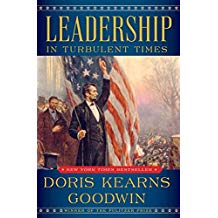 Are leaders born or made? Where does ambition come from? How does adversity affect
the growth of leadership? Does the leader make the times or do the times make the
leader?
Are leaders born or made? Where does ambition come from? How does adversity affect
the growth of leadership? Does the leader make the times or do the times make the
leader?
In Leadership, Goodwin draws upon the four presidents she has studied most closely—Abraham Lincoln, Theodore Roosevelt, Franklin D. Roosevelt, and Lyndon B. Johnson (in civil rights)—to show how they recognized leadership qualities within themselves and were recognized as leaders by others. By looking back to their first entries into public life, we encounter them at a time when their paths were filled with confusion, fear, and hope.
Leadership tells the story of how they all collided with dramatic reversals that disrupted their lives and threatened to shatter forever their ambitions. Nonetheless, they all emerged fitted to confront the contours and dilemmas of their times.
No common pattern describes the trajectory of leadership. Although set apart in background, abilities, and temperament, these men shared a fierce ambition and a deep-seated resilience that enabled them to surmount uncommon hardships. At their best, all four were guided by a sense of moral purpose. At moments of great challenge, they were able to summon their talents to enlarge the opportunities and lives of others.
This seminal work provides an accessible and essential road map for aspiring and established leaders in every field. In today’s polarized world, these stories of authentic leaders.
Big Game
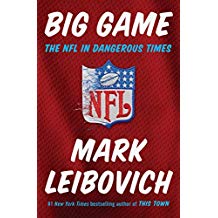 Like millions of Americans, Mark Leibovich has spent more of his life tuned into pro
football than he’d care to admit. Being a lifelong New England Patriots fan meant
growing up on a steady diet of lovable loserdom. That is, until the Tom Brady/Bill
Belichick era made the Pats the most ruthlessly efficient and polarizing sports Big
Gamedynasty of the modern NFL, and its fans the most irritating in all of Pigskin
America. Leibovich kept his obsession quiet, making a nice career for himself covering
that other playground for rich and overgrown children, American politics. Still, every
now and then Leibovich would reach out to Tom Brady to gauge his willingness to subject
himself to a profile. He figured that the chances of Brady agreeing were a Hail Mary
at best, but Brady returned Mark’s call in summer 2014 and kept on returning his calls
through epic Patriots Super Bowl victory and defeat, and a scandal involving Brady–Deflategate–whose
grip on sports media was as profound as its true significance was ridiculous.
Like millions of Americans, Mark Leibovich has spent more of his life tuned into pro
football than he’d care to admit. Being a lifelong New England Patriots fan meant
growing up on a steady diet of lovable loserdom. That is, until the Tom Brady/Bill
Belichick era made the Pats the most ruthlessly efficient and polarizing sports Big
Gamedynasty of the modern NFL, and its fans the most irritating in all of Pigskin
America. Leibovich kept his obsession quiet, making a nice career for himself covering
that other playground for rich and overgrown children, American politics. Still, every
now and then Leibovich would reach out to Tom Brady to gauge his willingness to subject
himself to a profile. He figured that the chances of Brady agreeing were a Hail Mary
at best, but Brady returned Mark’s call in summer 2014 and kept on returning his calls
through epic Patriots Super Bowl victory and defeat, and a scandal involving Brady–Deflategate–whose
grip on sports media was as profound as its true significance was ridiculous.
So began a four-year odyssey that took Mark Leibovich deeper inside the NFL than anyone has gone before. From the owners’ meeting to the draft to the sidelines of crucial games, he takes in the show at the elbow of everyone from Brady to big-name owners to the cordially despised NFL Commissioner, Roger Goodell. Ultimately, BIG GAME is a chronicle of “peak football”–the high point of the sport’s economic success and cultural dominance, but also the time when the dark side began to show. It is an era of explosive revenue growth, but also one of creeping existential fear. Players have long joked that NFL stands for “not for long,” but as the true impact of concussions becomes inescapable background noise, it’s increasingly difficult to enjoy the simple glory of football without the buzz-kill of its obvious consequences.
And that was before Donald Trump. In 2016, Mark’s day job caught up with him, and the NFL slammed headlong into America’s culture wars. BIG GAME is a journey through an epic storm. Through it all, Leibovich always keeps one eye on Tom Brady and his beloved Patriots, through to the 2018 Super Bowl. Pro football, this hilarious and enthralling book proves, may not be the sport America needs, but it is most definitely the sport we deserve.
The King of Sports
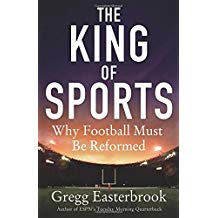 Gridiron football is the king of sports – it’s the biggest game in the strongest and
richest country in the world. In The King of Sports, Easterbrook tells the full story of how football became so deeply ingrained in American
culture. Both good and bad, he examines its impact on American society. The King of Sports explores these and many other topics:
Gridiron football is the king of sports – it’s the biggest game in the strongest and
richest country in the world. In The King of Sports, Easterbrook tells the full story of how football became so deeply ingrained in American
culture. Both good and bad, he examines its impact on American society. The King of Sports explores these and many other topics:
- The real harm done by concussions (it’s not to NFL players).
- The real way in which college football players are exploited (it’s not by not being paid).
- The way football helps American colleges (it’s not bowl revenue) and American cities (it’s not Super Bowl wins).
- What happens to players who are used up and thrown away (it’s not pretty).
- The hidden scandal of the NFL (it’s worse than you think).
Using his year-long exclusive insider access to the Virginia Tech football program, where Frank Beamer has compiled the most victories of any active NFL or major-college head coach while also graduating players, Easterbrook shows how one big university “does football right.” Then he reports on what’s wrong with football at the youth, high school, college and professional levels. Easterbrook holds up examples of coaches and programs who put the athletes first and still win; he presents solutions to these issues and many more, showing a clear path forward for the sport as a whole.
A History of the church in 100 Objects
 In this unique, rich, and eye-catching book, popular Catholic author and EWTN host
Mike Aquilina tells the Christian story through the examination of 100 objects and
places. Some, like Michelangelo’s Pietà, are priceless works of art. Others, like a union membership pen, don’t hold much
monetary value. But through each of them, Aquilina offers a memorable and rewarding
look at the history of the ChurcA Histoy of the Church in 100 Objectsh.
In this unique, rich, and eye-catching book, popular Catholic author and EWTN host
Mike Aquilina tells the Christian story through the examination of 100 objects and
places. Some, like Michelangelo’s Pietà, are priceless works of art. Others, like a union membership pen, don’t hold much
monetary value. But through each of them, Aquilina offers a memorable and rewarding
look at the history of the ChurcA Histoy of the Church in 100 Objectsh.
When Catholics tell their story, they don’t just write it in books. They preserve it in memorials, monuments, artifacts, and museums. They build grand basilicas to house tiny relics.
In this stunning book, Aquilina, together with his writer-daughter Grace, show how the history of the Church didn’t take place shrouded in the mists of time. It actually happened and continues to happen through things that we can see and sometimes hold in our hand.
The Christian answer to Neil MacGregor’s New York Times bestseller A History of the World in 100 Objects, Aquilina’s A History of the Church in 100 Objects introduces you to:
- The Cave of the Nativity (the importance of history, memory, and all things tangible)
- Catacomb niches (the importance of Rome, bones, and relics of the faith)
- Ancient Map of the World (the undoing of myths about medieval science)
- Stained Glass (representative of Gothic cathedrals)
- The Holy Grail (Romance literature and the emergence of writing for the laity)
- Loaves and fish (a link from Jesus to the sacrament of the Eucharist)
- The Wittenberg Door (Martin Luther and the onset of the Reformation)
Each of these and the 93 other items and places in the book tell part of the Christian story. Each is an essential piece of the story of our salvation.
God makes himself known and accessible through material things, always accommodating himself to our condition. It is, after all, the condition he created for us—spiritual and material—and the form he assumed for our salvation.
Creative Confidence
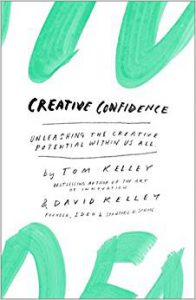 Too often, companies and individuals assume that creativity and innovation are the
domain of the “creative types.” But two of the leading experts in innovation, design,
and creativity on the planet show us that each and every one of us is creative. In
an incredibly entertaining and inspiring narrative that draws on countless stories
from their work at IDEO, the Stanford d.school, and with many of the world’s top companies,
David and Tom Kelley identify the principles and strategies that will allow us to
tap into our creative potential in our work lives, and in our personal lives, and
allow us to innovate in terms of how we approach and solve problems. It is a book
that will help each of us be more productive and successful in our lives and in our
careers.
Too often, companies and individuals assume that creativity and innovation are the
domain of the “creative types.” But two of the leading experts in innovation, design,
and creativity on the planet show us that each and every one of us is creative. In
an incredibly entertaining and inspiring narrative that draws on countless stories
from their work at IDEO, the Stanford d.school, and with many of the world’s top companies,
David and Tom Kelley identify the principles and strategies that will allow us to
tap into our creative potential in our work lives, and in our personal lives, and
allow us to innovate in terms of how we approach and solve problems. It is a book
that will help each of us be more productive and successful in our lives and in our
careers.
Creation and the Cross
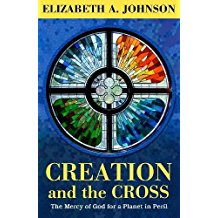 In this fresh creative approach to theology, Elizabeth Johnson asks how we can understand
cosmic redemption in a time of advancing ecological devastation. In effect, how can
we extend the core Christian belief in salvation to include all created beings? Immediately
this question runs into a formidable obstacle: the idea that Jesus’s death on the
cross was required as atonement for human sin– a theology laid out by the eleventh-century
theologian St. Anselm.
In this fresh creative approach to theology, Elizabeth Johnson asks how we can understand
cosmic redemption in a time of advancing ecological devastation. In effect, how can
we extend the core Christian belief in salvation to include all created beings? Immediately
this question runs into a formidable obstacle: the idea that Jesus’s death on the
cross was required as atonement for human sin– a theology laid out by the eleventh-century
theologian St. Anselm.
Constructing her argument (like Anselm) in the form of a dialogue, Johnson lays out the foundations in scripture, the teachings of Jesus, and the early Church for an understanding that emphasizes the love and mercy of God, showing how this approach can help us respond to a planet in peril
How to Read a Book
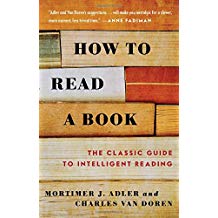 With half a million copies in print, How to Read a Book is the best and most successful guide to reading comprehension for the general reader,
completely rewritten and updated with new material.
With half a million copies in print, How to Read a Book is the best and most successful guide to reading comprehension for the general reader,
completely rewritten and updated with new material.
Originally published in 1940, this book is a rare phenomenon, a living classic that introduces and elucidates the various levels of reading and how to achieve them—from elementary reading, through systematic skimming and inspectional reading, to speed reading. Readers will learn when and how to “judge a book by its cover,” and also how to X-ray it, read critically, and extract the author’s message from the text.
Also included is instruction in the different techniques that work best for reading particular genres, such as practical books, imaginative literature, plays, poetry, history, science and mathematics, philosophy and social science works.
Finally, the authors offer a recommended reading list and supply reading tests you can use measure your own progress in reading skills, comprehension, and speed.
Prayer in the Catholic Tradition
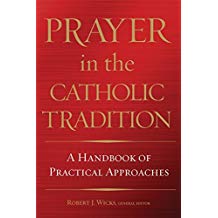 Within the Catholic tradition, there are many ways to pray. Yet, while there are smaller
books, books on praying with saints and contemporary figures, volumes assembling groups
of individual prayers, or prayer within one particular strand of Catholic spirituality,
there is no truly comprehensive work available on how to learn, practice, and teach
ways of prayer in the broad Roman Catholic tradition. This handbook breaks new ground,
offering forty important voices on forty essential topics for a comprehensive look
at the learning, practice, and teaching of all that it means to pray in the Catholic
tradition. Topics include:
Within the Catholic tradition, there are many ways to pray. Yet, while there are smaller
books, books on praying with saints and contemporary figures, volumes assembling groups
of individual prayers, or prayer within one particular strand of Catholic spirituality,
there is no truly comprehensive work available on how to learn, practice, and teach
ways of prayer in the broad Roman Catholic tradition. This handbook breaks new ground,
offering forty important voices on forty essential topics for a comprehensive look
at the learning, practice, and teaching of all that it means to pray in the Catholic
tradition. Topics include:
- Types of spirituality (including Carmelite, Franciscan, Ignatian, Dominican and other major schools) and how they frame prayer and prayerfulness
- Liturgical prayer
- New Testament scriptural approaches to prayer
- Praying with the Psalms
- Contemplation
- Liturgy of the Hours
- Conversational prayer
- Resistances to prayer
- Journaling as prayer
- Enhancing a spirit of prayerfulness
- Praying in Ordinary Time
- Praying through grief, suffering, loss and pain
- Dealing with distractions in prayer
- The essentials of Catholic prayer; and much more.
On the Brink of Everything
From bestselling author Parker J. Palmer comes a brave and beautiful book for all who want to age reflectively, seeking new insights and life-giving ways to engage in the world. “Age itself,” he says, “is no excuse to wade in the shallows. It’s a reason to dive deep and take creative risks.”
Looking back on eight decades of life—and on his work as a writer, teacher, and activist—Palmer explores what he’s on the Brink of Everything earning about self and world, inviting readers to explore their own experience. In prose and poetry—and three downloadable songs written for the book by the gifted Carrie Newcomer—he meditates on the meanings of life, past, present, and future. “The laws of nature that dictate sundown dictate our demise. But how we travel the arc toward the sunset of our lives is ours to choose: will it be denial, defiance, or collaboration?”
With compassion and chutzpah, gravitas and levity, Palmer writes about cultivating a vital inner and outer life, finding meaning in suffering and joy, and forming friendships across the generations that bring new life to young and old alike.
Revelation and Convergence
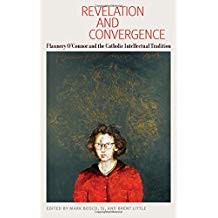 Revelation & Convergence brings together professors of literature, theology, and history to help both critics
and readers better understand O’Connor’s religious imagination.
Revelation & Convergence brings together professors of literature, theology, and history to help both critics
and readers better understand O’Connor’s religious imagination.
The contributors focus on many of the Catholic thinkers central to O’Connor’s creative development, especially those that O’Connor mentioned in the recently discovered and published A Prayer Journal (2013), or in her many letters to friends and admirers. Some, such as Leon Bloy or Baron von Hügel, remain relatively obscure to contemporary readers. Other figures, such as Augustine of Hippo or St. John of the Cross, are well-known, but their connection to O’Connor’s stories has received little attention.
Revelation & Convergence provides a much-needed hermeneutical lens that is often missing from contemporary criticism, representing O’Connor’s ongoing conversation with her Catholic theological and literary heritage, and provide a glimpse into the rich Catholic texture of her life and work.
Hit Makers
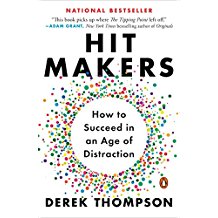 Nothing “goes viral.” If you think a popular movie, song, or app came out of nowhere
to become a word-of-mouth success in today’s crowded media environment, you’re missing
the real story. Each blockbuster has a secret history—of power, influence, dark broadcasters,
and passionate cults that turn some new products into cultural phenomena. Even the
most brilliant ideas wither in obscurity if they fail to connect with the right network,
and the consumers that matter most aren’t the early adopters, but rather their friends,
followers, and imitators — the audience of your audience.
Nothing “goes viral.” If you think a popular movie, song, or app came out of nowhere
to become a word-of-mouth success in today’s crowded media environment, you’re missing
the real story. Each blockbuster has a secret history—of power, influence, dark broadcasters,
and passionate cults that turn some new products into cultural phenomena. Even the
most brilliant ideas wither in obscurity if they fail to connect with the right network,
and the consumers that matter most aren’t the early adopters, but rather their friends,
followers, and imitators — the audience of your audience.
In his groundbreaking investigation, Atlantic senior editor Derek Thompson uncovers the hidden psychology of why we like what we like and reveals the economics of cultural markets that invisibly shape our lives. Shattering the sentimental myths of hit-making that dominate pop culture and business, Thompson shows quality is insufficient for success, nobody has “good taste,” and some of the most popular products in history were one bad break away from utter failure. It may be a new world, but there are some enduring truths to what audiences and consumers want. People love a familiar surprise: a product that is bold, yet sneakily recognizable.
Every business, every artist, every person looking to promote themselves and their work wants to know what makes some works so successful while others disappear. Hit Makers is a magical mystery tour through the last century of pop culture blockbusters and the most valuable currency of the twenty-first century—people’s attention.
From the dawn of impressionist art to the future of Facebook, from small Etsy designers to the origin of Star Wars, Derek Thompson leaves no pet rock unturned to tell the fascinating story of how culture happens and why things become popular.
Madison’s Music
 Are you sitting down? It turns out that everything you learned about the First Amendment
is wrong. For too long, we’ve been treating small, isolated snippets of the text as
infallible gospel without looking at the masterpiece of the whole. Legal luminary
Burt Neuborne argues that the structure of the First Amendment as well as of the entire
Bill of Rights was more intentional than most people realize, beginning with the internal
freedom of conscience and working outward to freedom of expression and finally freedom
of public association. This design, Madison's MusicNeuborne argues, was not to protect
discrete individual rights—such as the rights of corporations to spend unlimited amounts
of money to influence elections—but to guarantee that the process of democracy continues
without disenfranchisement, oppression, or injustice.
Are you sitting down? It turns out that everything you learned about the First Amendment
is wrong. For too long, we’ve been treating small, isolated snippets of the text as
infallible gospel without looking at the masterpiece of the whole. Legal luminary
Burt Neuborne argues that the structure of the First Amendment as well as of the entire
Bill of Rights was more intentional than most people realize, beginning with the internal
freedom of conscience and working outward to freedom of expression and finally freedom
of public association. This design, Madison's MusicNeuborne argues, was not to protect
discrete individual rights—such as the rights of corporations to spend unlimited amounts
of money to influence elections—but to guarantee that the process of democracy continues
without disenfranchisement, oppression, or injustice.
Neuborne, who was the legal director of the ACLU and has argued numerous cases before the Supreme Court, invites us to hear the “music” within the form and content of Madison’s carefully formulated text. When we hear Madison’s music, a democratic ideal flowers in front of us, and we can see that the First Amendment gives us the tools to fight for campaign finance reform, the right to vote, equal rights in the military, the right to be full citizens, and the right to prevent corporations from riding roughshod over the weakest among us. Neuborne gives us an eloquent lesson in democracy that informs and inspires.
Card Catalog
 The Library of Congress brings booklovers an enriching tribute to the power of the
written word and to the history of our most beloved books. Featuring more than 200
full-color images of original catalog cards, first edition book covers, and photographs
from the library’sCard Catalogue magnificent archives, this collection is a visual
celebration of the rarely seen treasures in one of the world’s most famous libraries
and the brilliant catalog system that has kept it organized for hundreds of years.
Packed with engaging facts on literary classics—from Ulysses to The Cat in the Hat to Shakespeare’s First Folio to The Catcher in the Rye—this package is an ode to the enduring magic and importance of books.
The Library of Congress brings booklovers an enriching tribute to the power of the
written word and to the history of our most beloved books. Featuring more than 200
full-color images of original catalog cards, first edition book covers, and photographs
from the library’sCard Catalogue magnificent archives, this collection is a visual
celebration of the rarely seen treasures in one of the world’s most famous libraries
and the brilliant catalog system that has kept it organized for hundreds of years.
Packed with engaging facts on literary classics—from Ulysses to The Cat in the Hat to Shakespeare’s First Folio to The Catcher in the Rye—this package is an ode to the enduring magic and importance of books.